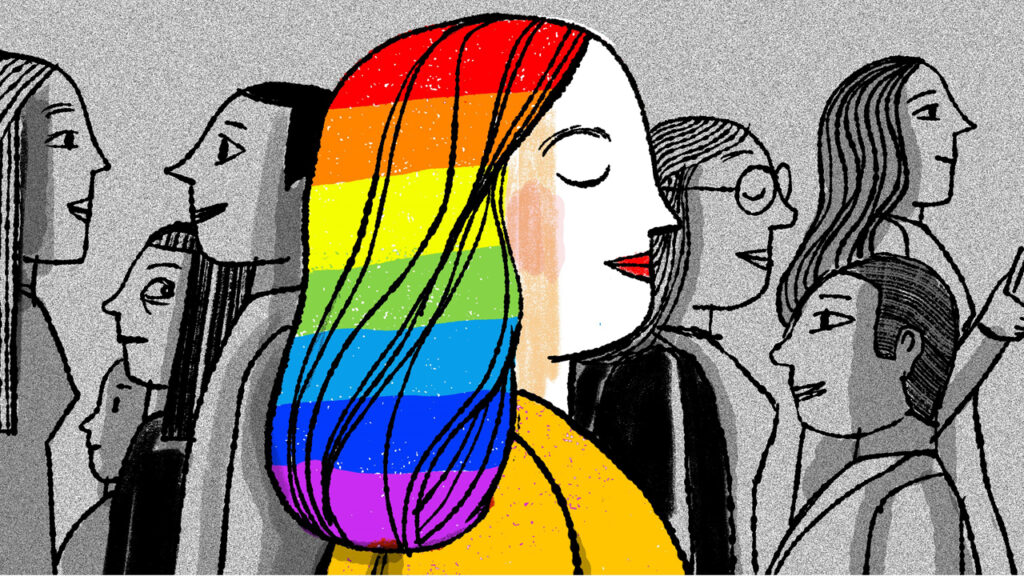In today’s diverse world, it is essential to acknowledge and address the unique challenges faced by LGBTQ individuals in the workplace. LGBTQ workplace issues encompass various concerns, including discrimination, bias, lack of inclusive policies, and microaggressions. This article explores the LGBTQ workplace issues, the importance of LGBTQ inclusion, steps companies can take to create inclusive environments, case studies of LGBTQ-inclusive companies, overcoming challenges and resistance, supporting LGBTQ employees, and the future of LGBTQ inclusion.
Contents
Types of LGBTQ Workplace Issues

These are some types of LGBTQ Workplace issues:
Discrimination and Bias
One of the primary challenges faced by LGBTQ individuals in the workplace is discrimination and bias. Prejudice based on sexual orientation or gender identity can manifest in various forms, including unequal treatment, denial of job opportunities, and biased performance evaluations. These discriminatory practices not only create an unfair and hostile work environment but also limit the career prospects of LGBTQ employees.
Lack of Inclusive Policies
Many organizations lack inclusive policies that explicitly protect LGBTQ individuals from discrimination. The absence of clear guidelines can contribute to an environment where LGBTQ employees feel unsupported and undervalued. Without inclusive policies, companies may inadvertently perpetuate biases and fail to provide adequate recourse for addressing workplace issues related to sexual orientation or gender identity.
Closeted Identity and Fear
Fear of being stigmatized or facing negative consequences often compels LGBTQ individuals to hide their true selves in the workplace. This fear of disclosure can have a significant impact on their mental health, well-being, and overall job satisfaction. The inability to openly express one’s identity can create a constant sense of anxiety and isolation, preventing LGBTQ employees from fully engaging and contributing to their work.
Microaggressions and Harassment
Microaggressions and harassment are everyday instances of subtle or overt hostility towards LGBTQ individuals. These can range from insensitive comments or jokes to deliberate exclusion and acts of intimidation. Such behaviors contribute to a toxic work environment, erode trust, and diminish the overall morale of LGBTQ employees. Moreover, they can lead to higher rates of turnover and decreased productivity.
The Importance of LGBTQ Inclusion

Inclusion is the cornerstone of a thriving and progressive workplace. These are some of how LGBTQ inclusion is important:
Promoting Equality and Human Rights
LGBTQ inclusion in the workplace is a matter of fundamental human rights and equality. By fostering an inclusive environment, organizations send a powerful message that they value and respect every individual, regardless of their sexual orientation or gender identity.
This commitment to equality not only aligns with ethical principles but also helps attract and retain diverse talent.
Enhancing Employee Well-being and Productivity
Inclusive workplaces that prioritize LGBTQ inclusion are known to have positive impacts on employee well-being and productivity. When employees feel accepted and valued for who they are, they experience greater job satisfaction, engagement, and overall mental health.
In contrast, individuals who face discrimination or prejudice due to their LGBTQ identity often suffer from higher levels of stress, anxiety, and job dissatisfaction. By creating a supportive environment, organizations can boost employee morale and productivity.
Tapping into Diversity for Innovation
Diversity, including LGBTQ diversity, fuels innovation and creativity. When individuals with different backgrounds, perspectives, and experiences come together, they bring a wealth of insights and ideas.
LGBTQ employees, like any other group, offer unique perspectives and problem-solving skills that can drive innovation and improve business outcomes. Embracing LGBTQ inclusion encourages diversity of thought, leading to fresh ideas, improved decision-making, and enhanced problem-solving capabilities.
Attracting and Retaining Top Talent
In today’s competitive job market, attracting and retaining top talent is crucial for organizational success. LGBTQ individuals, like any other job seekers, consider inclusivity as a critical factor when choosing an employer. Companies with a reputation for LGBTQ inclusion are more likely to attract diverse talent and increase their pool of qualified candidates.
Moreover, organizations that prioritize LGBTQ inclusion create a work environment where employees feel safe, valued, and supported, leading to higher employee retention rates.
Expanding Customer Reach and Brand Reputation
Inclusive workplaces that prioritize LGBTQ inclusion also enhance their brand reputation and customer reach. Customers increasingly expect organizations to demonstrate a commitment to diversity and inclusivity. By embracing LGBTQ inclusion, companies appeal to a broader customer base and build trust with diverse communities.
Moreover, consumers tend to support businesses that align with their values, and organizations that champion LGBTQ inclusion can gain a competitive edge in the market.
Fostering Social Responsibility
Promoting LGBTQ inclusion in the workplace goes beyond organizational benefits; it is a manifestation of social responsibility. By actively working to eliminate discrimination, bias, and inequality, organizations contribute to a more inclusive and equitable society.
This commitment resonates with employees, customers, and stakeholders, positioning the organization as a responsible corporate citizen.
Steps Towards LGBTQ Inclusion
These are the steps toward LGBTQ Inclusion:
Implementing Non-Discrimination Policies
To promote LGBTQ inclusion, companies should establish comprehensive non-discrimination policies that explicitly protect employees based on sexual orientation and gender identity. These policies should outline clear guidelines and consequences for discrimination, ensuring that LGBTQ individuals feel safe and valued within the organization. It is crucial to communicate these policies effectively and incorporate them into the company’s code of conduct.
Providing LGBTQ Diversity Training
LGBTQ diversity training is an effective way to educate employees about LGBTQ issues, dispel myths and stereotypes, and foster a culture of inclusion. This training can help create empathy, increase awareness, and develop a more supportive work environment. By providing employees with the knowledge and tools to navigate LGBTQ-related challenges, organizations can reduce prejudice and create a culture of acceptance.
Creating Safe Spaces and Support Networks
Establishing safe spaces and support networks within the workplace can significantly benefit LGBTQ employees. These spaces provide an opportunity for individuals to connect, share experiences, and seek guidance. Employee resource groups (ERGs) or affinity groups dedicated to LGBTQ individuals can create a sense of belonging and offer mentorship opportunities. In addition, providing access to LGBTQ-inclusive counseling services can support the mental health and well-being of employees.
Reviewing Benefits and Policies
Organizations should critically review their benefits and policies to ensure they are inclusive and supportive of LGBTQ employees. This includes offering gender-neutral restroom facilities, providing comprehensive healthcare coverage for gender-affirming treatments, and accommodating diverse family structures. By regularly reviewing and adapting policies, companies can address evolving needs and create an inclusive environment that respects and values the experiences of LGBTQ individuals.
Overcoming Challenges and Resistance

These are some of the challenges and misconceptions of LGBTQ inclusion:
Addressing Misconceptions and Stereotypes
One of the challenges in promoting LGBTQ inclusion is addressing misconceptions and stereotypes. Education and open dialogue are key to dispelling myths and fostering understanding. Companies should provide opportunities for employees to learn about LGBTQ issues and encourage open conversations that challenge biases and prejudices.
Encouraging Leadership Support
To overcome resistance to LGBTQ inclusion, it is crucial to gain leadership support. When leaders demonstrate a commitment to equality and inclusion, it sets a positive tone for the entire organization. Executives should communicate the importance of LGBTQ inclusion, lead by example, and hold others accountable for promoting an inclusive culture.
Handling Employee Pushback
Some employees may resist LGBTQ inclusion due to personal beliefs or biases. Addressing employee pushback requires a delicate balance of empathy, education, and clear communication. Companies should foster an environment where all voices are heard while reinforcing the values of inclusion and diversity. Providing resources and channels for employees to express their concerns and seek guidance can help them navigate these challenging situations.
Supporting LGBTQ Employees
These are some of the ways for supporting LGBTQ Employees:
Allyship and Advocacy
Creating a supportive environment for LGBTQ employees involves promoting allyship and advocacy. Allies play a crucial role in fostering inclusion by actively supporting and standing up for LGBTQ individuals. Companies can provide ally training programs, encourage the formation of ally networks, and recognize and celebrate allyship efforts within the organization.
Mental Health and Well-being
Supporting the mental health and well-being of LGBTQ employees is essential. Companies should offer access to LGBTQ-inclusive counseling services and resources, ensuring employees have a safe space to discuss their concerns. Implementing employee assistance programs (EAPs) that address LGBTQ-specific issues can provide additional support.
Celebrating LGBTQ Diversity
Organizations can celebrate LGBTQ diversity by recognizing and commemorating important LGBTQ events and milestones. This can include hosting Pride Month activities, displaying LGBTQ-inclusive symbols and flags, and inviting LGBTQ speakers to share their experiences. By visibly celebrating LGBTQ diversity, companies send a powerful message of inclusion and acceptance.
The Future of LGBTQ Inclusion
These are the future trends of LGBTQ inclusion:
Changing Attitudes and Societal Progress
Over the years, attitudes towards LGBTQ individuals have evolved, with increased acceptance and support. As societal progress continues, the future of LGBTQ inclusion looks promising. However, ongoing advocacy, education, and awareness efforts are necessary to build upon this progress and create lasting change.
Ongoing Advocacy and Education
To ensure continued LGBTQ inclusion, organizations must engage in ongoing advocacy and education. This includes staying informed about current LGBTQ issues, supporting LGBTQ rights initiatives, and collaborating with external LGBTQ organizations. By maintaining a commitment to advocacy and education, companies can contribute to a more inclusive society.
Conclusion
Addressing LGBTQ workplace issues is vital for creating inclusive environments that embrace the diversity of all employees. By understanding the challenges faced by LGBTQ individuals, companies can foster a work environment where everyone feels valued, respected, and able to thrive. Embracing LGBTQ inclusion is not only a moral imperative but also a strategic advantage that drives innovation attracts talent and cultivates a positive organizational culture.
Life may sometimes be challenging for people from the LGBTQ community, but Online LGBTQ Counseling can help. Get experienced LGBTQ therapists at PrideMantra: Book a trial LGBTQ therapy session.


